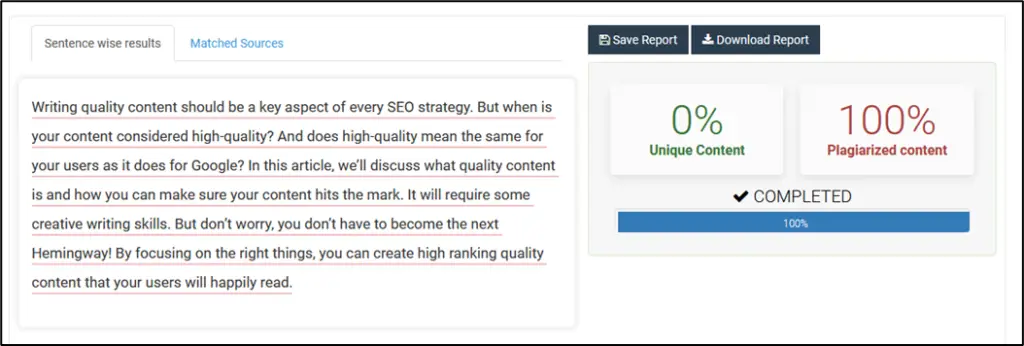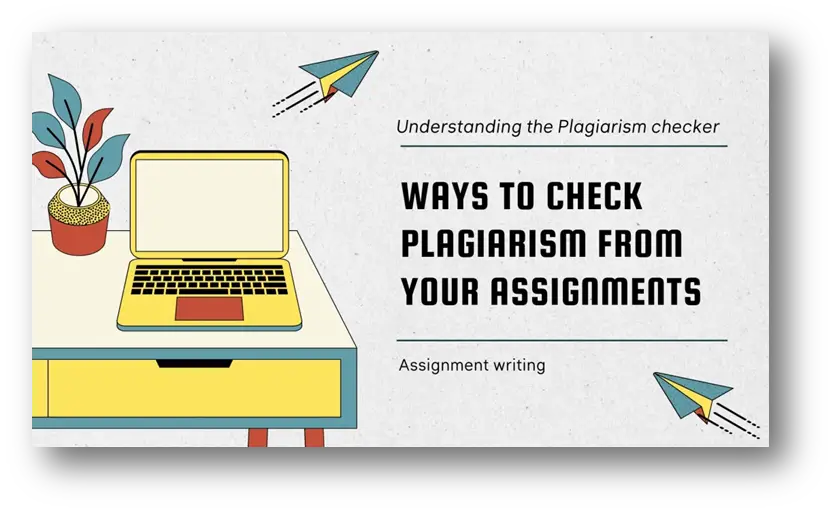Ways To Check Plagiarism from Your Assignments
Plagiarism is one of the most common issues for students in academia. In fact, around 34% of students admit that they have cheated/plagiarized during assignments or test writing. Now, this isn’t exactly uncommon or something to sound the alarms.
However, it is a major issue in academics, and it is the responsibility of students to prevent it by all means before submitting their work. So, what are they going to do? How can they avoid being caught for plagiarism in their content?
That is what we will discover in this post, as well as several methods for detecting plagiarism in your assignments. So, let’s get right to it.
Understanding Plagiarism
Plagiarism is the practice of stealing another writer’s idea or text and presenting it as your own. Plagiarism in academic writing is more than just duplicating stuff word for word; it also includes copying concepts or information without giving proper credit.
There are many consequences of plagiarism in professional and academic settings. Professional settings, such as blogs or websites, will usually get penalized if they are using plagiarized content—or they just wouldn’t rank higher.
On the other hand, academic writers/students will get punished in the form of expulsion, bad grades, or getting suspended altogether. And since plagiarism doesn’t give proper credit to the original author, it’s considered a highly unethical practice in academic or professional settings.
Manual Checking Techniques
There are quite a few ways to check for plagiarism today, but there are some who still do it the old-school way. One of the oldest ways on the internet is to simply Google a suspect line from any text, and you might get matching results, like so:

The red-marked content indicates the plagiarized section, and you can see that it’s quite literally the same. However, this is only one method of identifying plagiarism instances; another manual method is to examine it on a website called Google Scholar.
This website collects all scholarly publications and literature from the internet, making it easy for students and writers to access such content. As a result, you can utilize it similarly to Google’s conventional search engine to identify plagiarism, as shown below:

Now as you can notice, the searched content is identical to the content shown in the snippet. This tells us that it was either copied directly from the website or that the article wasn’t given proper credit/citation.
However, this sort of plagiarism detection can be lengthy, tiring, and requires way too much work.
Utilizing Online Plagiarism Detection Tools
There are online tools that allow users to check plagiarism much more efficiently. This is the preferred method for professional and academic writers. And that’s why students and teachers can make the most out of it all the same.
These online plagiarism checkers can help you identify the source of the plagiarized text and plagiarism percentage and also help you compare the original against the plagiarized text directly. Here’s an example of a plagiarism checker doing all the aforementioned things:

As seen here, this particular text is 100% copied from the source detected by this tool. Now, you do get to see the percentage of duplicity by this plagiarism checker, but where’s the source? By clicking on Matched Sources tab, you can simply locate it like this:

And then you can proceed to save or download the plagiarism report by clicking the pertaining buttons just above the plagiarism percentage:

This is one of the best ways to check for plagiarism in any content. It’s not only the fastest, but it also allows you to:
- Effectively recognize various types of plagiarism in a text.
- Find the original content’s source.
- Understand the percentage of plagiarism in a specific text.
- And Generate plagiarism reports to pass alongside the assignments.
And that’s why using a reliable tool like this is a much better and easier option than manual plagiarism-checking techniques.
Verifying Proper Citation and Referencing
Not having proper referencing and citation also renders any text plagiarized. That’s why it’s always important to check citations and references. Now, there are three main types of citations used in assignment writings in academies, and they are as follows:
- APA – American Psychological Association
- MLA – Modern Language Association
- Chicago Manual Style
Students might be required to cite their sources in one of the aforementioned ways. So, the only way to check them is whether they’re by the standards set by each citation type. And according to Murdoch University, here’s how you can check your content:
APA:

MLA:

Chicago:

Now, you can notice that each citation style is different, with some referencing the dates first, while others focusing on the publisher and author more. Using the wrong citation style won’t make your content plagiarized, but it will deduct points or grades from your assignments.
And that’s why, by doing all of these, you can ensure that your content is plagiarism-free and that you have cited all the sources correctly.
Reviewing Similarities in Ideas and Concepts
Another great way to check for plagiarism is by analyzing similar ideas and concepts. This is mainly applicable to teachers, who wish to check for plagiarism in assignments, but suspect students might be copying concepts.
That’s why there are a few tips that both students and teachers can employ to check for plagiarism:
- Assessing the originality of the topics and headings.
- Analyzing the uniqueness of ideas presented and searching for similar concepts on Google.
- And by directly comparing the assignment with existing assignments.
This way, they’ll be able to understand whether the content they wrote/are checking is in any way similar to existing text. However, this is yet another vague way to check for plagiarism and may not be very helpful to a lot of students and teachers.
Conclusion
These are some of the top techniques to check for plagiarism in assignments. It’s important to analyze the sources and cite carefully while you are writing the assignment. However, it’s also important that you focus on checking your assignment content with a viable plagiarism checker to save time and find plagiarism more efficiently.
Suggested Readings
Analysis of “In Flanders Fields” by John McCrae

